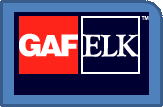Product Review: Asphalt Composition Shingles
Shingle producers have labored with enthusiasm to safeguard their share from the roofing marketplaces inside the industry’s emerging green building environment. Traditional estimations peg Asphalt Composition Shingles as delivering a lot more than 75% from the roofing market, with a few industry experts saying it’s up to 95%.
Knowing that, roofing producers have upgraded the energy performance and resource efficiency of the items. Today’s shingles incorporate new characteristics, including cool-roof performance, recycled content, and finish-of-existence solutions that may lead to greening new and existing houses. This short article explores the greenest asphalt shingle possibilities today and also the highly effective initiatives in position to recycle the countless a lot of shingles torn off structures each year.
Anatomy of the Asphalt Composition Shingles
Until about ten years ago, Asphalt Composition Shingles were offered in 2 dominant types, organic and fiberglass. The organic a part of asphalt shingles would be a cellulose fiber substrate, frequently recycled paper, heavy-laden with asphalt that provided the shingle structure. Today, 95% of Asphalt Composition Shingles manufactured are strengthened having a glass pad rather than paper and therefore are known as composition, or comp, shingles. Manufacturing enhancements make today’s Asphalt Composition Shingles highly wind and impact-resistant, quick to close even just in cold temperature, and searching, too.
The anatomy of the modern Asphalt Composition Shingles begins having a highly designed glass pad in the centre from the shingle, supplying greater strength and needing less asphalt than a mature, paper-based organic shingle. This nonwoven, multidirection chopped glass pad resembles the structural composition of oriented strand board. “The glass strands are organized in multidirectional fashion, supplying all angles of strength,” describes Tony Ruffine, v . p . of sustainability and proper marketing at GAF, the nation’s biggest shingle manufacturing company. This glass pad comes sandwiched between two layers of asphalt.
The very best layer of asphalt is covered with stone granules that provide the Asphalt Composition Shingles color and safeguard it from ultraviolet rays and weathering. This refined, granite-like coating originates from basaltic deposits, including basalt and rhyolite, which aren’t only hard and sturdy, but opaque to help keep UV rays from going down hill the asphalt. Progress in granule technologies have prolonged a shingle’s existence from typically two decades towards the now common 30, 40, as well as half a century. Granules are colored utilizing a semi-ceramic process, much like firing glazes on clay, but at lower temps. Produced by merely a couple of companies within the U . s . States, these granules will also be designed to mirror infrared warmth and roof temps awesome. Additionally they could have chemicals, for example algaecides.
The region of shingle underneath the overlay row of Asphalt Composition Shingles is known as the head-lap, it’s the gray-black area of the shingle over the nailing strip. If your shingle boasts recycled content, here’s where the majority of it is available in. The head-lap granules will come from coal slag, a energy plant waste product. Recycled content varies using the manufacturing facility, so you should check with local assets to determine what Asphalt Composition Shingles in your town possess the greatest percentage.
The rest of the critical components inside a Asphalt Composition Shingles range from the adhesive tabs along the foot of the shingle and also at the nailing strip. These mechanical and chemical accessories lock Asphalt Composition Shingles towards the roof deck and fuse shingle courses because the sun warms up the roof, melting the adhesive tabs. This mixture of nails and thermal adhesives, together with the rip tolerance from the shingle, offers the product’s resistance to the wind. Most shingles meet the absolute minimum 60 miles per hour wind speed rating, but greater-grade Asphalt Composition Shingles, for example GAF’s Timberline ArmorShield II, can transport wind rankings of 130 to 150 miles per hour. This might talk to quality a lot more than ecology, but bear in mind that after hail and windstorms hit, 100s of roofs are broken, then removed and changed. Sturdiness is a meaning of environmental economy.

